Hi, I’m Beau, and I used to think that a knife was just a knife. In Boy Scouts the only distinguishing factor between knives was whether or not they also had pliers, scissors, a saw blade or any other number of accessories. Whether or not they were sharp never really entered the picture unless it was time to demonstrate knife-sharpening techniques to get a requirement signed-off.
All that boys really care about when it comes to knives is how big or how “nifty” they are – whether they’re dull is almost irrelevant unless you cut yourself, in which case your dad probably took that knife away anyhow, so it was irrelevant.
Apparently, however, it’s important to have a sharp knife. Let me tell you how I learned this.
There I was, Thursday evening right after coming home from work. It’s been a long day and I’m ready to relax and enjoy a delicious dinner with my wife (something I’m grateful to always be able to count on). I come in the front door and Belle is all excited –“I’ve got something for us to do on Saturday!” she says with her usual enthusiasm.
“Yeah, Belle?”, I say as I grab a glass of water and settle in at the breakfast nook, “What’s that?”
“Well, Williams & Sonoma is going to have a FREE KNIFE SHARPENING class at 1 PM, how exciting is that??”
“OH! A KNIFE SHARPENING CLASS! How… exciting??” My confusion is as evident to her as to me, but she remains undeterred.
“Yes, it’s at 1 PM and I really think we should go.”
“Okay, Belle – sounds wonderful. We’re already going to be hanging out with friends anyhow, and maybe they’ll want to tag along,” I say, realizing that my work buddies are probably NOT going to be jumping at the chance to sharpen cutlery in the same way my bride is.
“Perfect! I’ll make sure we have a spot.” Guess that seals the deal.
And that’s how it happened. We showed up to the demonstration with open minds and high hopes (well, one of us did, at least).
Always the skeptic, I was loathe to believe that some shopkeeper would teach me new techniques for sharpening knives, but, like many a male customer at Williams & Sonoma, the free samples kept my spirits high enough to continue (it was chilly and the apple cider was PERFECT).
As it turned out, there’s more to knife sharpening than my pre-pubescent camping experiences taught me.
The Importance of a Sharp Knife
First off, the most important thing about a knife is that it is sharp. A sharp knife is a safe knife. Dull blades are not only inefficient, but dangerous. If you cut yourself with sharp knife it leaves a clean cut. Cutting yourself with a dull knife results in jagged cuts that take longer to heal and are more prone to infection (as if cutting yourself in the kitchen wasn’t hassle enough).
Also, sharp knives prevent food from oxidizing as rapidly because the clean cut doesn’t rip the flesh of fruit and vegetables the way a dull one does, exposing less surface area (geeky, but good to know).
In the end sharp knives just work better and make your life easier. Who wants to spend any more time in the kitchen hacking away at a sweet potato because the knife is a dull as a nail? Not this guy!
How to Determine if your Knife is Sharp or Dull
But how do you know if your knife is sharp or not? Well, the easiest test is to hold a sheet of paper in the air from the left or right side and try cutting it from top to bottom with the knife in question. A sharp knife will slice right through, but a dull one will catch and might not even cut much at all.
There’s also the standard, “Man, this knife used to be really good and now it SUCKS” test, but it’s somewhat more subjective and also puts you in the danger zone of working with a dull kitchen tool [insert obligatory Top Gun reference here].
Once you determine that you have a dull knife, the question becomes what to do about it.
How to Sharpen a Kitchen Knife
In general, dull knives do not need to be sharpened as much as they need to be honed.
Sharpening is the process of REMOVING material from the knife to re-create the original edge. Honing, on the other hand, merely re-aligns the “teeth” of the blade such that they are all going the same direction, clearing up any areas where the metal has been flattened (at the micro-level, of course). In general you should hone your blade every couple of times you use it and sharpen it only a couple times a year.
There are a couple schools of thought when it comes to honing. But first, here is what the honing tool looks like:
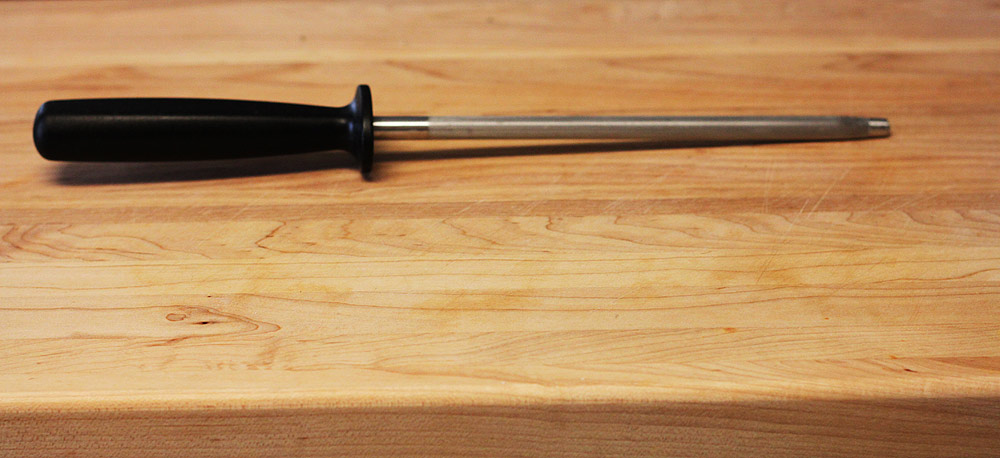
First, you probably have the honing steel because it comes standard in most knife blocks. This is that long, circular piece of steel with small, crisscrossed grooves that you see FoodTV stars and Iron Chefs using prior to every competition (if you’re into that sort of thing).
The process is simple, but the execution is key. In order to successfully hone a knife you need to move the blade across the steel in a circular motion at the angle of the edge – for example, our large cook’s knife has a blade angle of 14 degrees, so that’s the angle I need to recreate when I’m honing it (think just shy of parallel). You need to do that on both sides.
It sounds complicated, but if you watch a video or two on YouTube it’s pretty simple to get the hang of it. The only real downside of this is that you don’t know for SURE the precise angle you’re creating, which could cause the blade to become skewed towards one side or the other. To sharpen the knife then requires a professional appointment, generally with the originating company (aka sending it back to the manufacturer).
You can purchase sharpening steels and whetstones as well, if you’re confident in your angular measurement ability or maybe want that “retro” feel. Up to you.
How to Sharp a Kitchen Knife: Our Preferred, Less Complicated Way
The second, and my preferred, way of dealing with dull knives is to purchase a combination honing and sharpening tool, which allows you to quickly and conveniently hone the blade with accuracy and also have a means of sharpening it yourself. The key thing here is to know the angle your blade is set to, as some have different angles.
In the previous example I stated that our large chef’s knife has an angle of 14 degrees, but we also have a Santoku knife that has an angle of 11 degrees. This doesn’t sound like much, but it makes a difference. Once you know that you have found a sharpening tool matching your blades (check with the manufacturer’s website if you have questions), the rest is easy.
A normal two-part tool has a handle and two slots: one with carbide for sharpening and one with ceramic for honing. On our tool (pictured below) you will see a slot titled “fine” and one titled “coarse.” The fine slot acts as the honing tool and the coarse one acts as the sharpening tool.
To do either simply hold the heel of the blade at the top of the slot and gently press and pull it through from heel to tip (NOTE: unlike with the honing steel, you only go one direction. Never “saw” at a tool like this, ONLY pull).
Doing so four to six times will keep the knife sharp when honing, and a biennial appointment with the carbide-side will keep it sharp after the honing gives way.
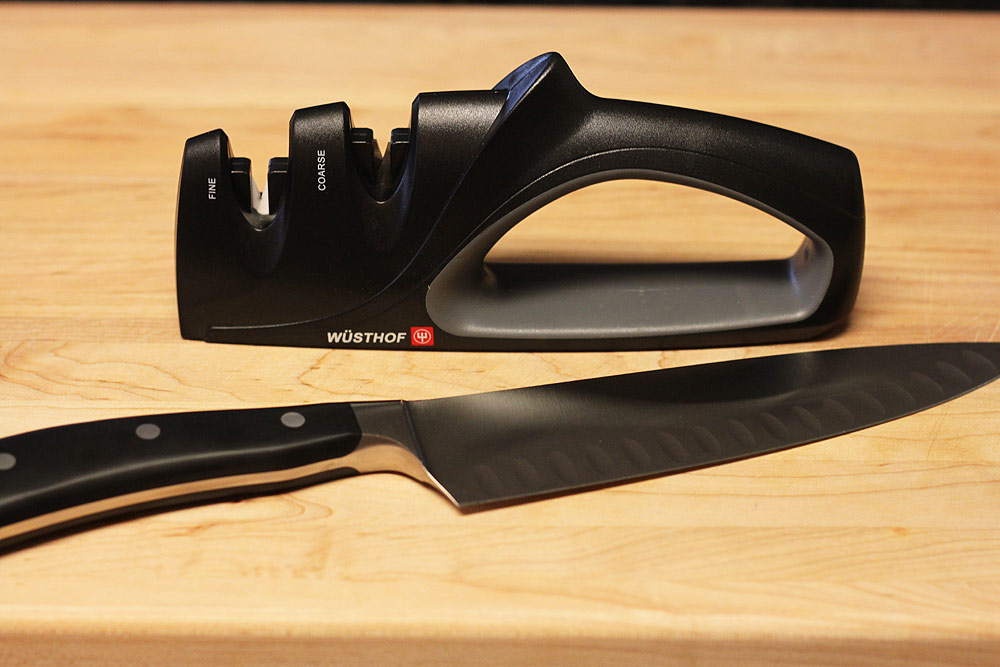
So there you have it – I tricked you into reading more than you may have ever wanted to know about knives. Don’t worry, I was tricked also – it’s just impossible to turn down my gorgeous wife AND delicious apple cider. Guess I’ll just have to keep learning!
AND, if you are feeling overwhelmed, do what we did. Go to the place where you purchased your knife and ask them what sharpening tool you can use to sharpen your knife and then ask for a demonstration. And then re-read this post if you forget all that info!
Note from Belle: we purchased our knives at Williams Sonoma when they were having an incredible sale on Wusthof knives. They generally offer knife sharpening for free or for a small fee, so if this is all too much to think about just go back to the place you purchased your knife and ask about getting a knife sharpening service (kind of like taking your car in for an oil change).
ALSO, Williams Sonoma typically has free classes on Saturdays. They are so fun and you learn lots. So consider making it a “date” one Saturday afternoon 🙂
Lastly, we are not being paid to talk about Wusthof or Williams Sonoma. These are our opinions and experiences. We simply wanted to share 🙂
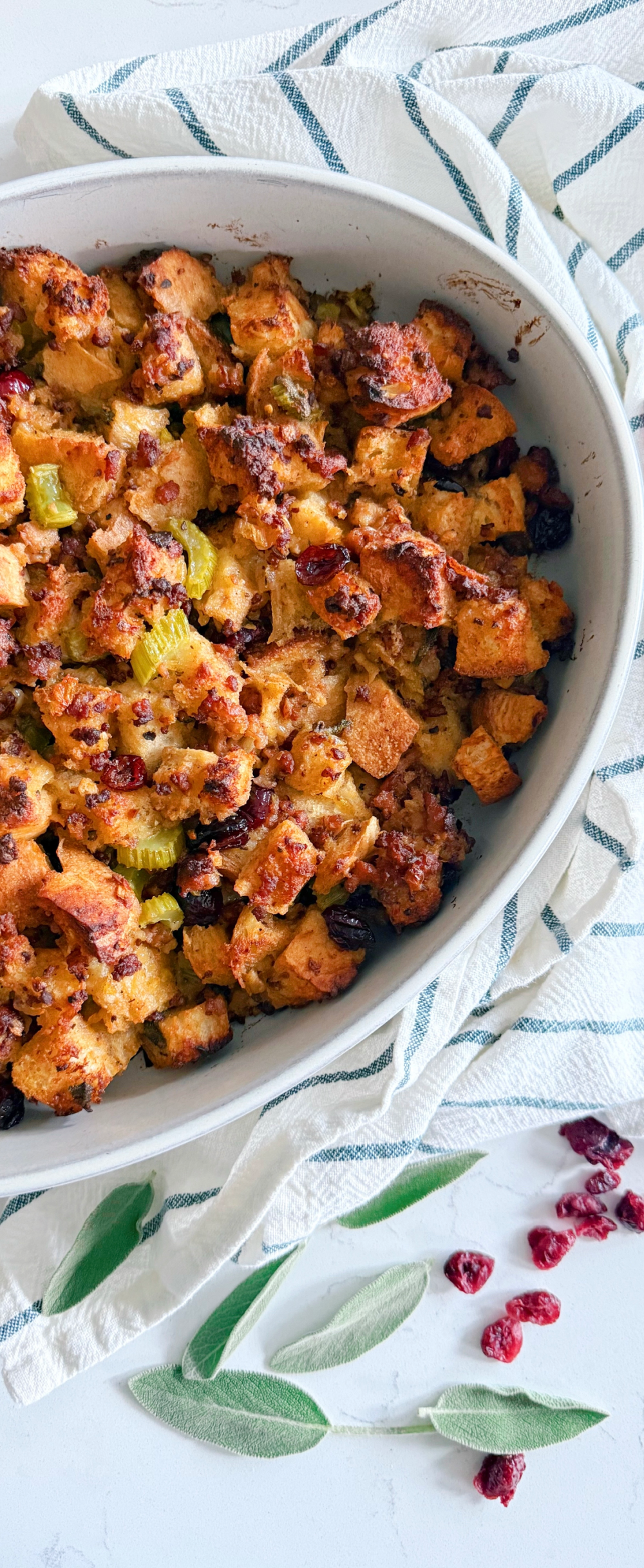
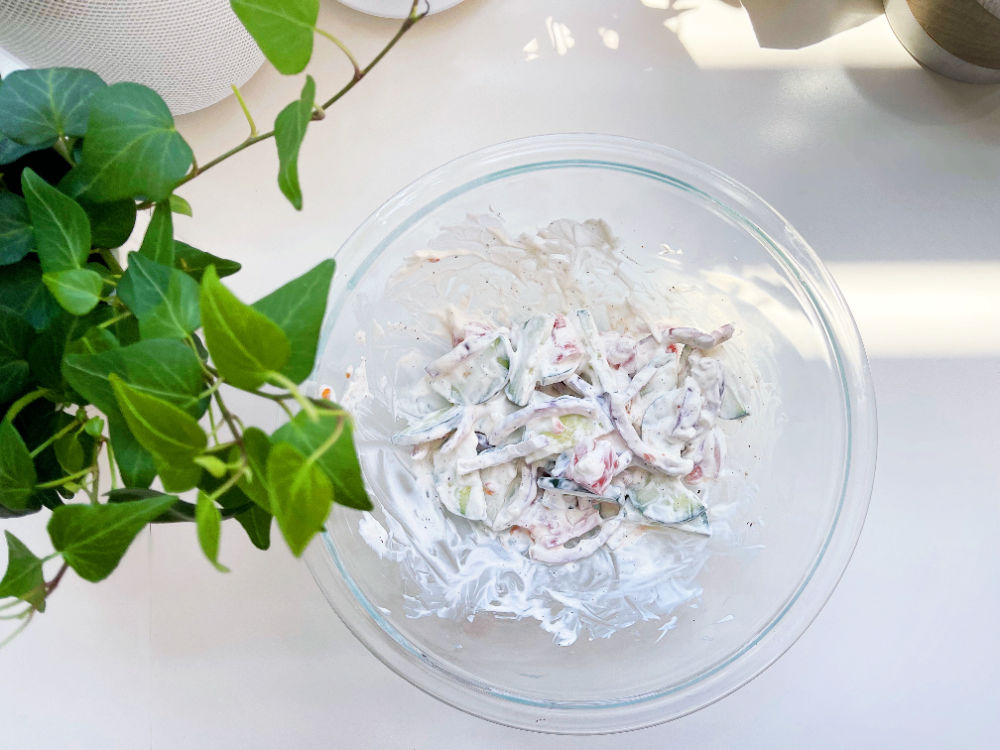
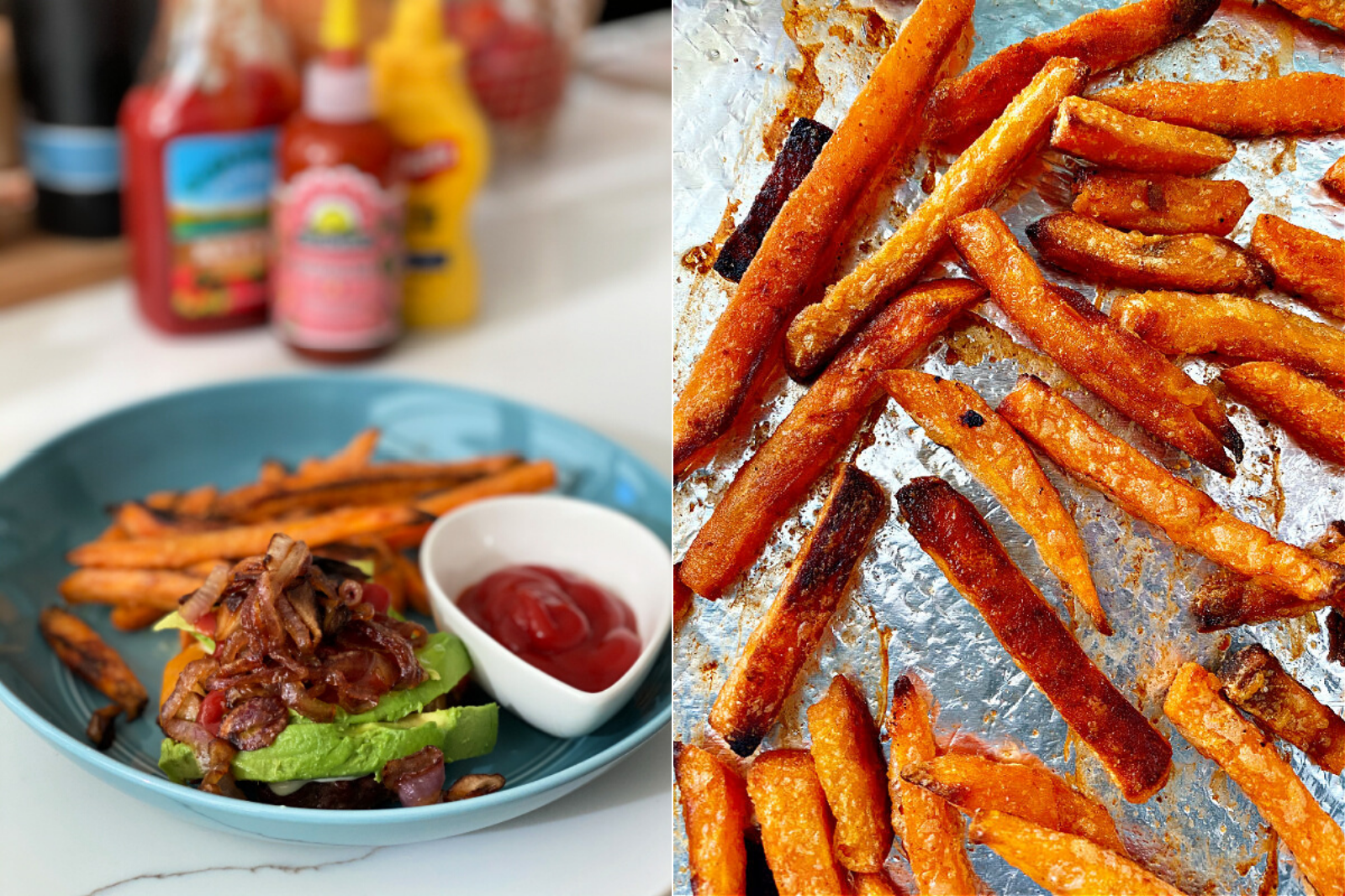
So in the above pic with your Wusthof knife sharpener, which part of it is the honing tool? I only see the sharpener for a straight or jagged knife, and you wrote “my preferred, way of dealing with dull knives is to purchase a combination honing and sharpening tool, which allows you to quickly and conveniently hone the blade with accuracy and also have a means of sharpening it yourself”. So I’m slightly confused and don’t want to purchase a honing tool if I don’t need to as I also have the same knife sharpener as you. Thanks for clarifying! 🙂
Hey Jenna, great question! Sorry for the confusion. The knife sharpening tool has two slots. One is titled “fine” and one titled “coarse.” The fine slot acts as a honing tool and the coarse one is for sharpening. I will update the post for more clarity! Thanks again for pointing that out.
I am SOOOO impressed by this blog! I have both the honing steel and the knife sharpener – unknown brand, but never knew how, when, where, what to do with them for sure. Thanks for the detailed lesson, Beau!
No way! I had no idea! Ha, thank you so much for teaching me something very helpful! I always thought the “fine” slot was for straight blades, and the “course” was for jagged blades and they were both just to sharpen knives. Now I know the fine is to hone all your blades and the course is to sharpen all your knives no matter the type of blade! Thanks again, very good blog!
Of course! And this is straight from the product review (of the Wusthof sharpener): “Sharpens all straight-edged knives as well as scissors. It offers two stages of coarseness: a carbide section for setting a sharp edge on dull blades and a ceramic section to finely hone and finish the edge (also useful for quick touch-ups).”
So it sharpens scissors too! Hooray!